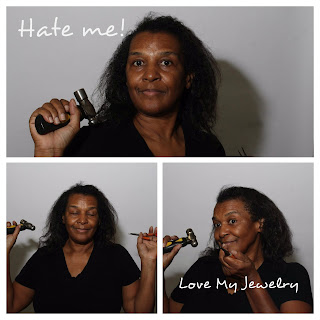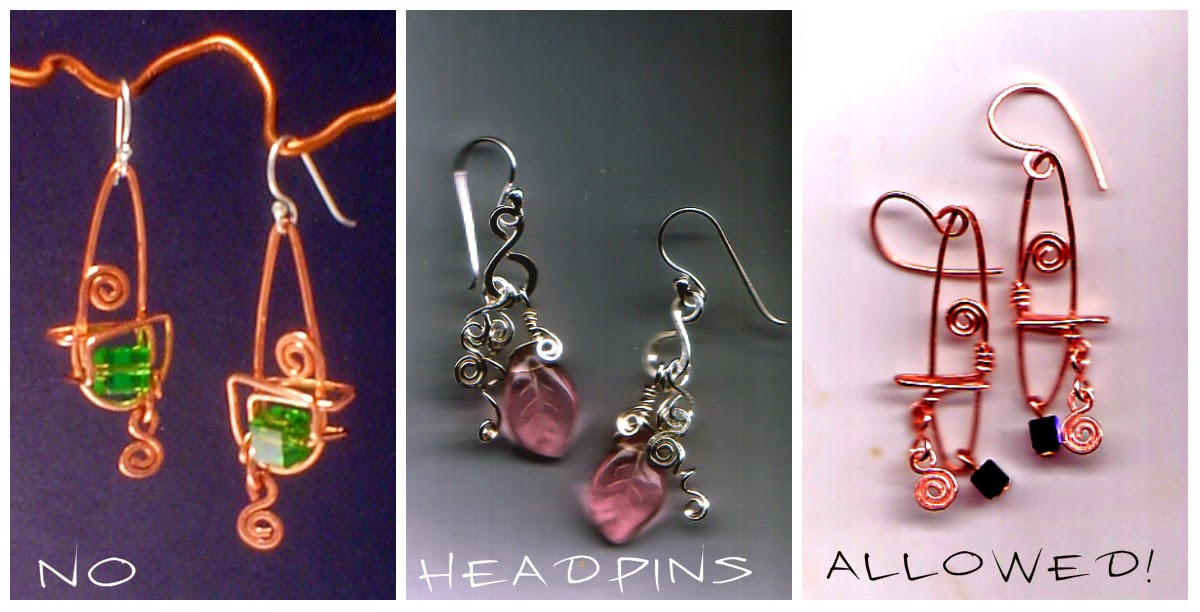10 Blowtorch Safety Tips for Jewelry-Makers
 |
| After experimenting with a variety of torches, I still prefer a basic "Plumber's Torch" |
If you have recently graduated from simple beading and wire-work to metalwork, you probably found the transition a bit scary. After all, you've moved from pliers and cutters to far more intimidating devices. Metalwork requires the mastery of handsaws, rotary tools, drills, buffers, polishers and other power-driven implements. Each of these tools has the ability to produce an injury in the blink of an eye, but a blowtorch usually generates the most anxiety.
If you are learning to solder metal pieces together, you may already have your first blowtorch. It's the one tool most of my students find intimidating; but with a few safety tips, learning the soldering process can go smoothly.
Blowtorch Virgins
When I start teaching a metal class series with students who have never used a blowtorch before, we must gradually work our way up to the part where I ask them to light a torch for the first time. I spend several days of class time getting them comfortable with the newness of working with metal. Instead of emphasizing all the things that might happen, I talk about the beautiful creations they can make with an idea, a saw, some metal and a little bit of effort.
I encourage blowtorch virgins to draw their jewelry ideas on paper. Next, I coach them into transferring designs to metal, cutting them out with a jeweler's saw, and then smoothing the raw metal edges. I bring out the torches during the last few days of a metal class series.
Blowtorch Safety
By the time I ease my blowtorch virgins into a torch conversation, they've gone too far to turn back. It's a simple transition to the soldering process. We begin with these key elements of blowtorch safety.
1. A blowtorch is not a toy so don't play. Read all the safety precautions on the package and the propane tank before beginning.
2. Keep a fire extinguisher handy at all times. If you take your time and follow proper safety rules, you probably won't need it; but it will ease your mind to know it's there, just in case you do.
3. Assemble your torch properly. Look for the arrows on both the head and the propane tank for the proper directions and be sure to turn the tank, not the torch head. (Oxygen tanks turn the opposite direction of Propane)
If the torch head isn't tightly in place, you may experience gas leaks. When you fire up your torch, flames may shoot out of odd places. That can be very scary.
4. Do not turn the nozzle to release the gas unless you are ready to light it immediately. Free-flowing gas is highly flammable. It can create a hazardous situation for you and everyone else in the room.
5. Use a striker to ignite your torch instead of a match. It's easier and safer because there's no flame to deal with. A striker is a metal device designed specifically for lighting torches. It contains a piece of flint that generates a spark when struck against its metal holder.
6. If you are really uncomfortable with lighting a torch, some manufacturers make torches with self-contained, electronic ignitions. You simply turn on the gas, then push a button to light it, a one-handed operation.
7. Don't be embarrassed if you feel uncomfortable using a torch. Develop a healthy respect for the power of what insurance people call a "friendly fire" and act accordingly. If you are too afraid to develop torch skills on your own, get lessons. Then practice, practice, practice until you feel comfortable doing it on your own. Work with a soldering stand or soldering block in conjunction with a soldering pan to minimize the risk of fire.
8. Keep your workroom adequately ventilated to remove the fumes from your soldering process. Wearing a mask provides some limited additional protection against inhaling these noxious fumes, but a ventilator mask that works like a simpler gas mask is much better.
9. There are many different types of torches. Over the years, I've bought expensive and inexpensive models, some for propane, some for MAPP gas. Some torches use a propane/oxygen mix for a hotter flame and mini-torches rely on butane cartridges.
There are many other varieties, but I always fall back to my 'Plumber's torch' for basic soldering. It is simpler to assemble, produces a large hot flame, and it operates with fewer parts to fail and cause problems.
10. Soldering is for grownups. That's what I tell my new students. It's fun to make beautiful soldered jewelry creations, but the process can be too dangerous for those not mature enough to follow basic safety rules.
Be crafty, and be safe,
Carol, The Nice Lady
Article previously published by Carol on Yahoo Voices


Impressive and powerful suggestion by the author of this blog are really helpful to me.
ReplyDeleteBollywood Jewelry